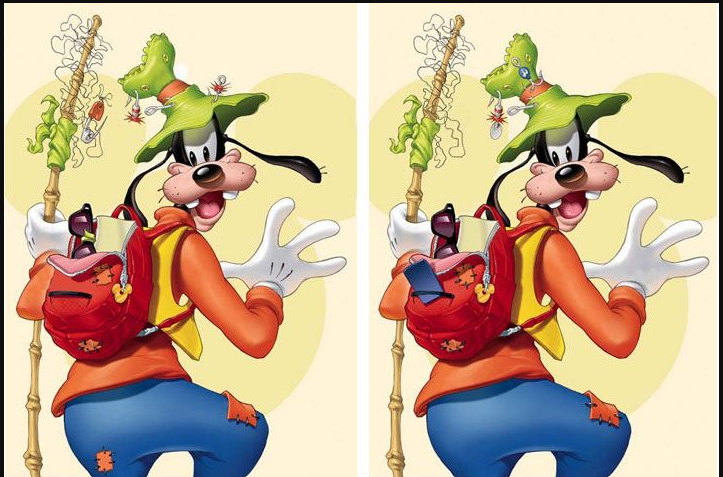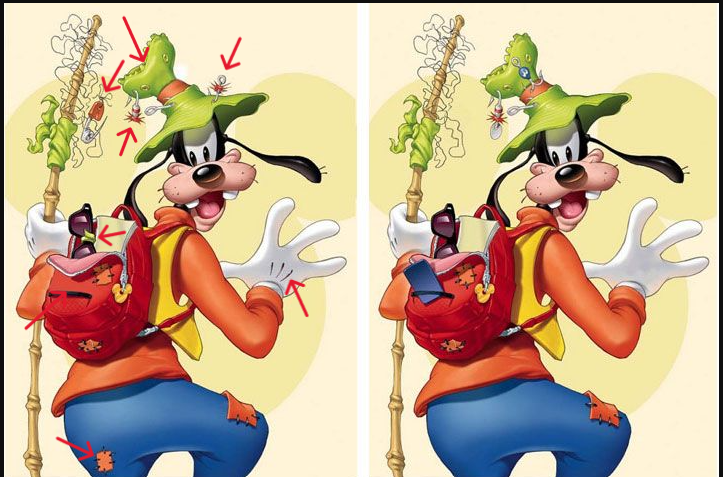The Fascinating World of Optical Illusions and Spot-the-Difference Mastery
Optical illusions have intrigued people for centuries, captivating our minds and challenging our perceptions. These playful tricks on the eyes reveal just how extraordinary the human brain is, especially when processing visual information. Let’s dive into this fascinating world and discover how mastering spot-the-difference puzzles can sharpen your mind like never before.

What Are Optical Illusions?
Optical illusions occur when what we see doesn’t align with reality. They manipulate our perception, making us question the depth, size, motion, or patterns we observe. But what exactly causes these mind-bending phenomena?
- Intentional Creations: Artists and designers craft illusions to dazzle audiences, turning ordinary visuals into spellbinding experiences. Think of M.C. Escher’s impossible staircases or the famous Rubin’s Vase.
- Natural Occurrences: Nature has its own way of tricking us. From mirages shimmering on hot roads to peculiar shadow patterns, these illusions remind us of the complexity of our visual system.
Optical illusions are more than just visual tricks—they’re a testament to the brain’s power and limitations. They challenge us to see beyond the obvious and understand how perception shapes reality.
Spot-the-Difference Puzzles: A Visual Challenge Like No Other
Spot-the-difference puzzles are a delightful application of visual perception. These games test your ability to observe and analyze subtle changes between two images. While they may seem simple, excelling at these puzzles requires focus, patience, and practice.
Ever wondered how some people can breeze through these challenges while others struggle? The secret lies in technique and perseverance.

Tips to Master Spot-the-Difference Games
- Practice Makes Perfect
Like any skill, regular practice is essential. Engaging with these puzzles frequently enhances your ability to notice even the smallest discrepancies. Over time, your brain becomes wired to identify differences almost automatically. - Set a Timer
Want to up the ante? Introduce a time limit. Racing against the clock trains your brain to process visual information faster, improving both speed and accuracy. - Compare Side by Side
When possible, view the two images side by side. Direct comparisons make even the tiniest differences stand out, whether it’s a missing button or a shifted shadow. - Focus on Patterns
Pay close attention to repetitive patterns and symmetrical designs. These areas often hide the trickiest differences, challenging even seasoned players. - Take Breaks
Staring too long can cause eye fatigue. Step away for a moment, then return with fresh eyes. You’ll be amazed at how much easier it is to spot those elusive changes. - Use a Pointer
Whether it’s your finger or a pen, pointing out differences keeps your search organized. It also ensures you don’t accidentally revisit areas you’ve already analyzed.
Why Spot-the-Difference Games Are Good for You
These puzzles aren’t just fun—they’re a workout for your brain! Here’s how they benefit you:
- Improves Attention to Detail: Spot-the-difference challenges sharpen your ability to notice minor details, a skill that translates to real-world problem-solving.
- Boosts Cognitive Sharpness: Regularly engaging in these puzzles keeps your brain active and alert, much like mental yoga.
- Relieves Stress: Immersing yourself in a puzzle provides a mental escape, offering relaxation and a sense of accomplishment.

Joining the Elite 5% of Spot-the-Difference Masters
Did you know only a small percentage of people can solve the most challenging spot-the-difference puzzles? Joining this elite group is not about being naturally gifted; it’s about dedication and strategy.
- Celebrate Small Wins: Each time you spot a difference, it’s a victory. Acknowledge your progress and use it as motivation to tackle tougher challenges.
- Push Your Limits: Seek out more complex puzzles. The harder the challenge, the more satisfying the win.
- Stay Consistent: Improvement doesn’t happen overnight. Like any skill, persistence and regular practice are key.
Optical Illusions vs. Spot-the-Difference: A Shared Connection
Both optical illusions and spot-the-difference puzzles rely on how the brain processes visual information. They expose the quirks and shortcuts our brains use to interpret the world. While illusions deceive us, spot-the-difference puzzles challenge us to overcome those deceptive tendencies.

Conclusion
The world of optical illusions and spot-the-difference puzzles is as intriguing as it is rewarding. These visual challenges not only entertain but also help us better understand the intricacies of our perception. By practicing and mastering spot-the-difference puzzles, you sharpen your mind, enhance your attention to detail, and join the ranks of expert solvers. So, the next time you find yourself staring at two seemingly identical images, embrace the challenge—it’s more than just a game; it’s a journey into the fascinating capabilities of your own mind.





